
[Rotem Sivan] Neo-soul guitar techniques inspired by Raphael Saadiq
- Converting Chords into Neo-Soul Chords
- Step 1: Barre Them
- Step 2: Add the 7th
- Step 3: Shell Voicings
- Step 4: Use Open Strings
- Adding More Color: The 9th and the 11th
- Upper Structures: Layering Chords for More Melodic Freedom
- Experimenting with Chord Order and Quality
- What We Explored in the Studio
- Chord Extensions: Key takeaways
- rotem-sivan-neo-soul-guitar-lesson.gp
Not long ago, I had the incredible opportunity to connect with one of the most influential figures in the world of neo-soul: Raphael Saadiq. He’s an absolute pioneer, standing shoulder to shoulder with legends like D’Angelo and J Dilla. In my opinion, Raphael Saadiq is one of the founding fathers of neo-soul, pushing the envelope and creating a whole new sonic landscape that we all love today. Of course, there are many other artists in that universe, but these three really made a profound impact.
While I was in LA, Raphael invited me to hang out at his studio. We spent the entire day jamming, playing around, and diving deep into conversations about the evolution of neo-soul. It was a day full of music, laughter, and even some unexpected surprises. At one point, Raphael casually picked up his phone and FaceTimed Snoop Dogg! Suddenly, I found myself being introduced to Snoop Dogg, right there in the studio. It was surreal!
Later, we started jamming and we discussed what makes neo-soul and lo-fi such captivating genres. Those lush, beautiful sounds and colors that are so characteristic of neo-soul—they’re elements that can be both simple and complex. I want to share with you some of the insights I gained from that day and give you a clear, organized way to explore these sounds on your guitar.
Converting Chords into Neo-Soul Chords
To articulate these neo-soul vibes, I often start with simple chords like D minor, A minor, and E minor. When you play them in an open position, they don’t quite capture the richness of neo-soul.
So, the first step is to move these chords into barre chords. For example, take the D minor, A minor, and E minor chords and play them as barre chords. It’s a little better, but we’re still not there yet.
Step 1: Barre Them
Open position chords
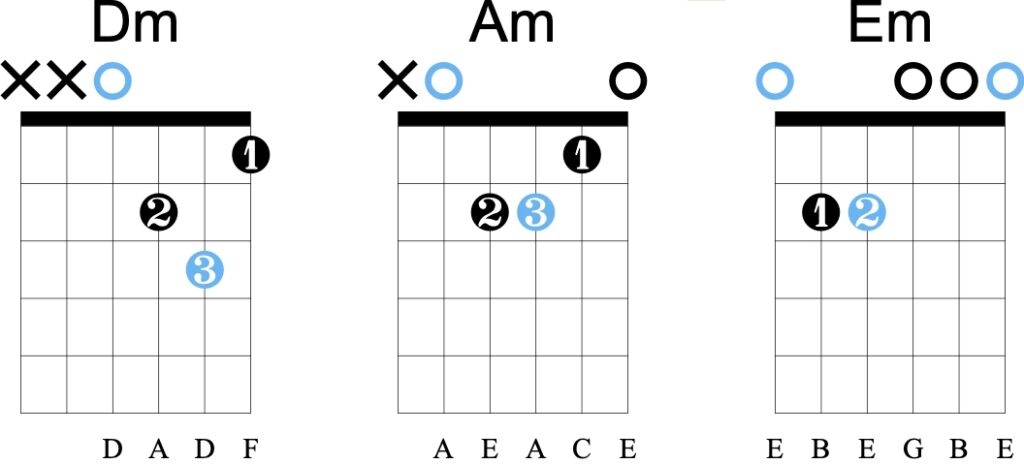
This is how we barre them
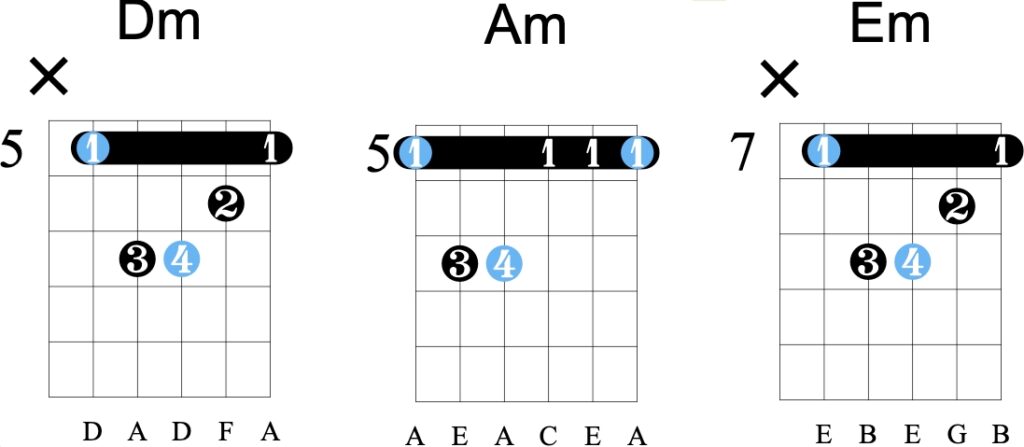
By converting these chords into barre chords, you begin to move away from the standard sound and into a more versatile and flexible space. Barre chords allow you to start exploring different voicings and positions on the guitar neck, which is essential for creating that neo-soul vibe.
Step 2: Add the 7th
To add more depth, we introduce the 7th. For this, simply take one finger off the barre chord.
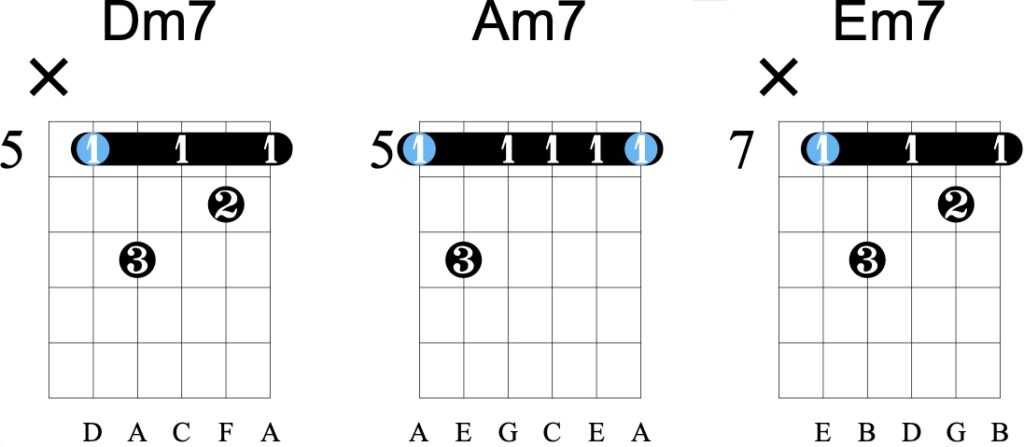
For example, playing D minor 7, A minor 7, and E minor 7 starts to give us that soulful sound, but I personally find the usual shapes a bit dull. Instead, I prefer shell voicings, which are compact and have a beautiful sound.
Step 3: Shell Voicings
A shell chord is a chord that only contains the root, third, and seventh—stripped down and elegant. So, instead of playing a full chord, we focus on the essence of the chord. For instance, play D minor 7, E minor 7, and then jump to A minor using the same shape—it’s literally a copy-paste of shape.
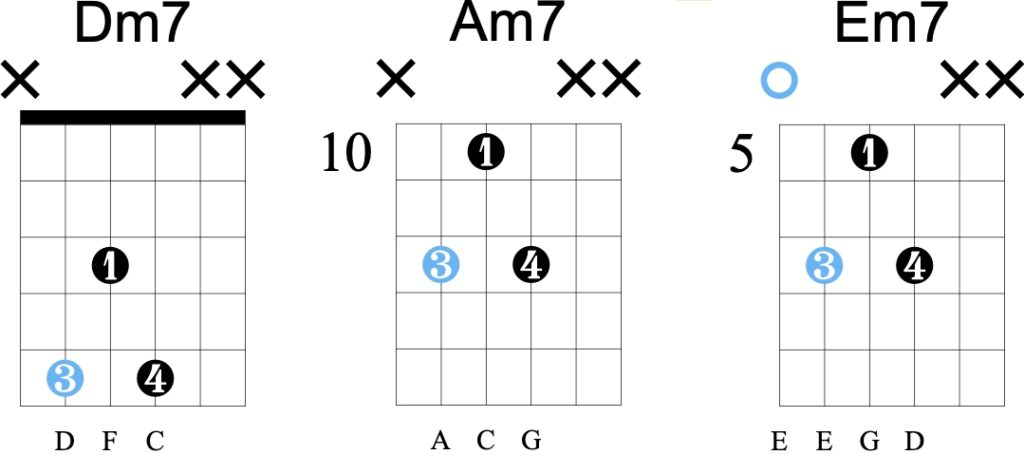
How do you know the names of these chords? The bass notes tell you: D minor 7, E minor 7, and A minor 7.
Step 4: Use Open Strings
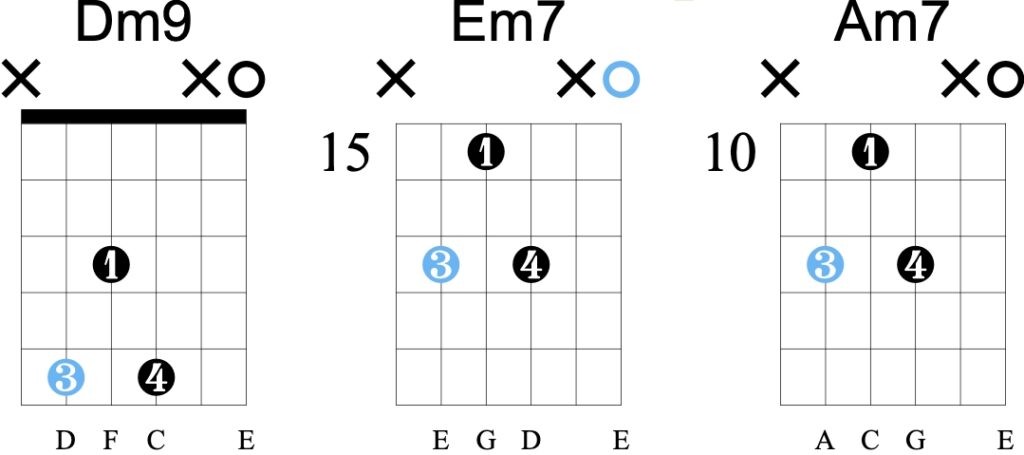
While playing these chords, I found myself adding the open E string, which gives an anchor point that creates a sense of continuity and fluidity. This small addition transforms the chords into D minor 7/9, E minor 7 with an open E, and A minor with an open E—a very cool texture that makes the progression sound more cohesive. By adding a little bit of rhythm, we start to hear the foundation of a neo-soul groove.

Adding More Color: The 9th and the 11th
Next, we add the 9th for more color.
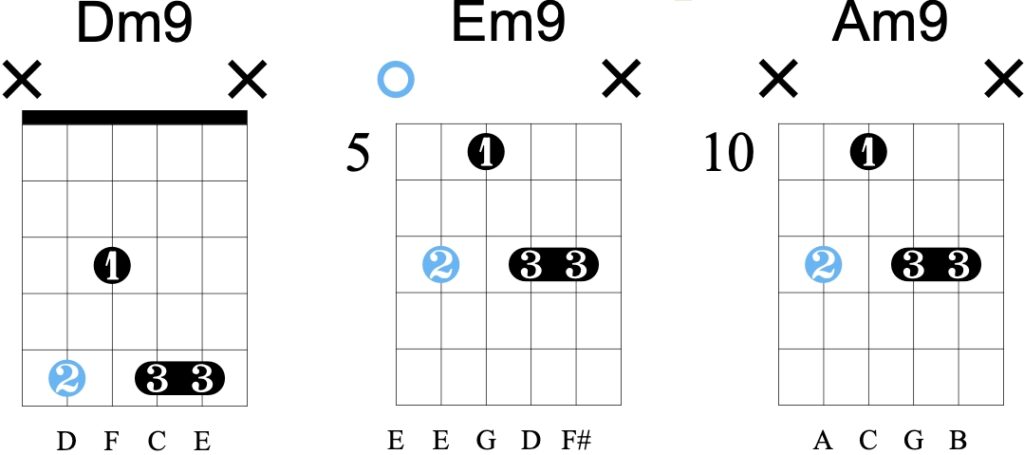
When I was playing D minor 7/9, I imagined adding the 11th, which is the G note on top of the D minor 7/9. When I added it, it felt like a whole orchestra coming together.
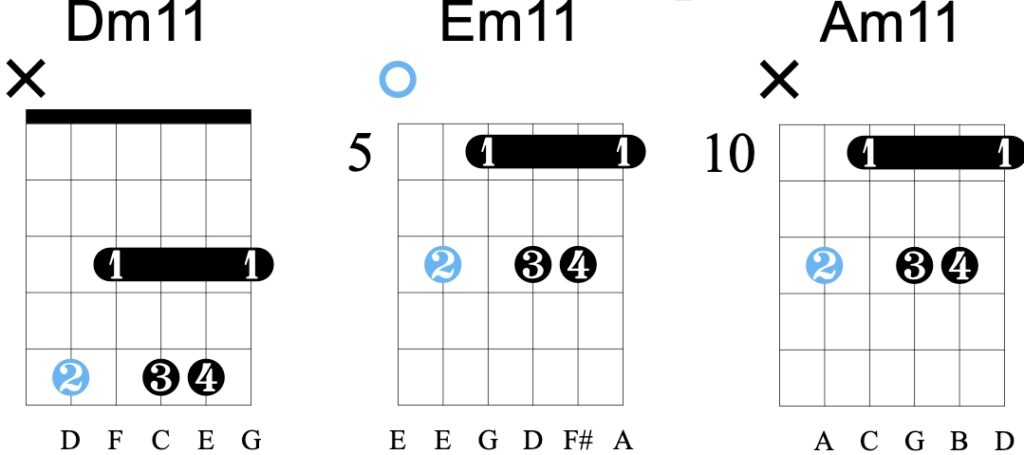
Just like that, we moved from a simple D minor, A minor, and E minor progression to something more dynamic and soulful.
Upper Structures: Layering Chords for More Melodic Freedom
One of the concepts we explored in the studio was using upper structures. In previous examples, we went from adding the 7th to the 9th to the 11th, essentially stacking thirds on top of the chord. Continuing with this logic, we can find more chords to play. For example, if we go up another third over Dmin9 (D, F, A, C, E, and the 9th G), we notice that the notes also form an Fmaj9 chord.


Simply change the bass note from D to F, and now we’re using the Fmaj9 shape over Dmin11. This approach gives more melodic freedom when adding to the progression.
Notice that although we can change the bass notes of the chords, they all still work over the original bass line!

Experimenting with Chord Order and Quality
Changing the order of the chords can create a fascinating sound. Although it might not be perfect for every progression, it’s a staple of the genre.

You can also change all the minor chords to major or dominant 9s. For instance, instead of playing D minor, play an F major 7. Then, play G major 7 for E minor and C major 7 for A minor. This creates a fresh, new sound.
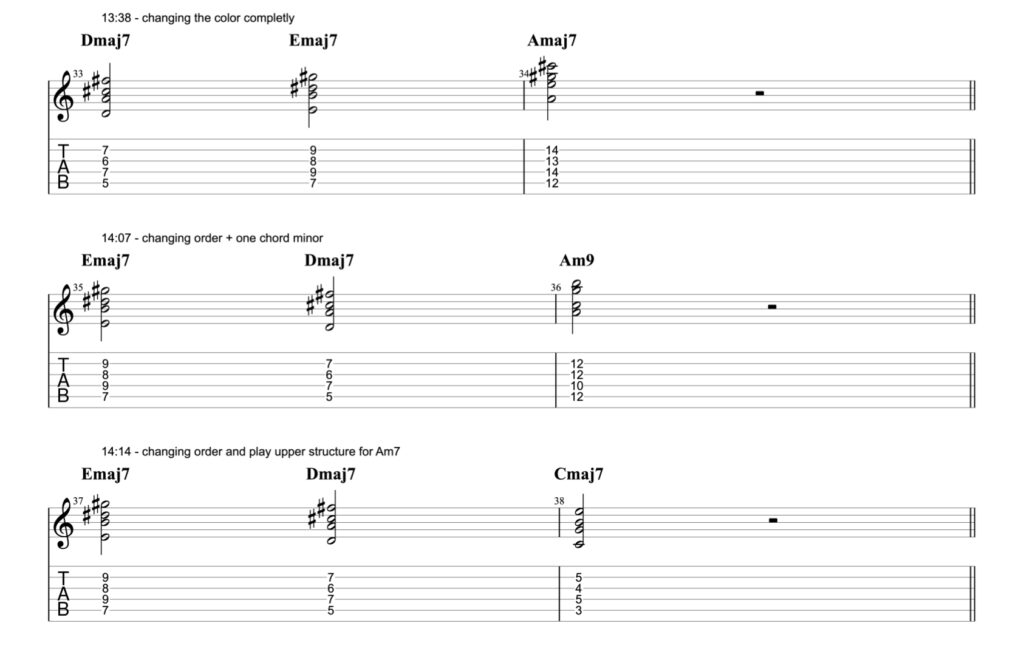
And remember, the point is to use the bass line as a starting point and explore different colors to open up new doorways in your playing.
What We Explored in the Studio
Raphael and I explored these lush, soulful sounds that define neo-soul, focusing on how simple elements, when approached thoughtfully, can create those rich, iconic vibes. The goal? To make these techniques accessible and help you infuse your guitar playing with that same soulful energy.
Chord Extensions: Key takeaways
One of the key takeaways from the day was the power of adding chord extensions to the basic chords of a song. By moving fundamental chords into different positions on the guitar and adding subtle variations, you can transform them into something far more expressive.
Remember, the magic of neo-soul lies in these subtle nuances—the small changes that make a big difference. So, take your time, explore these techniques, and don’t be afraid to experiment. The more you understand the shapes and the theory behind them, the more freedom you’ll have in your playing. And who knows? Maybe someday, you’ll find yourself jamming in a studio with legends like Raphael Saadiq and Snoop Dogg, too. Keep practicing, stay curious, and most importantly, enjoy the journey!
This article was written by Rotem Sivan, we invite you to check out his amazing YouTube channel here.
Leave a comment
Your email address will not be published.


